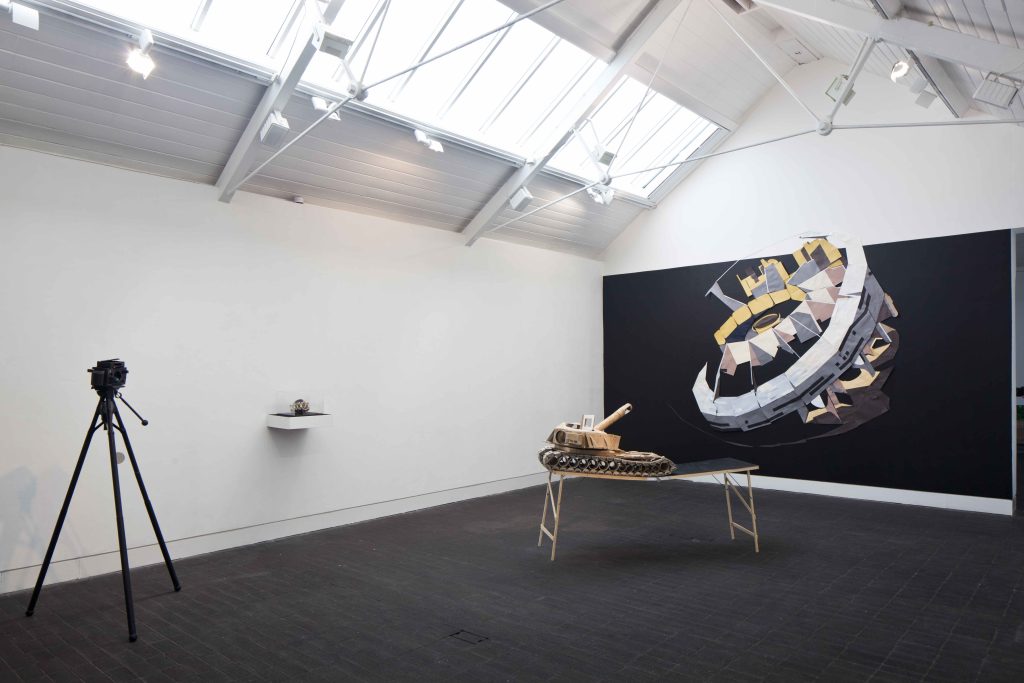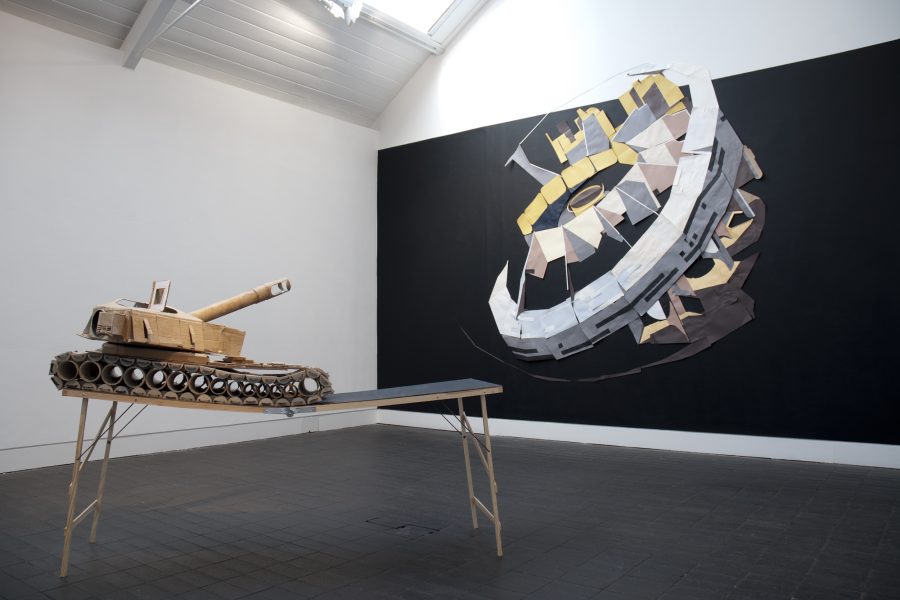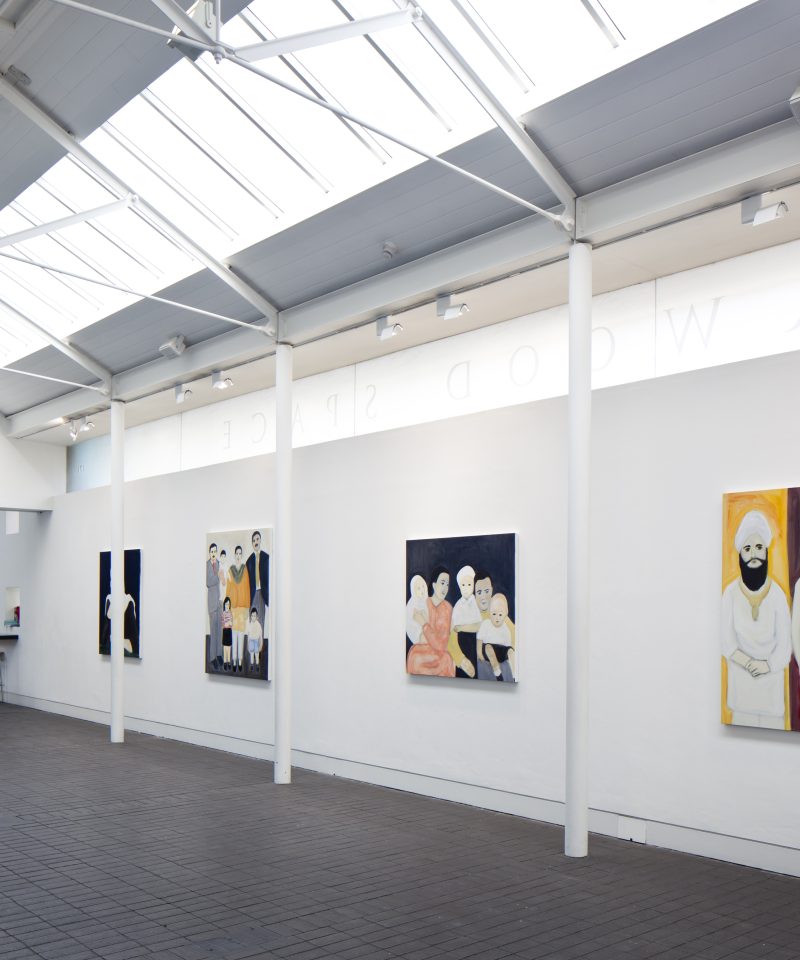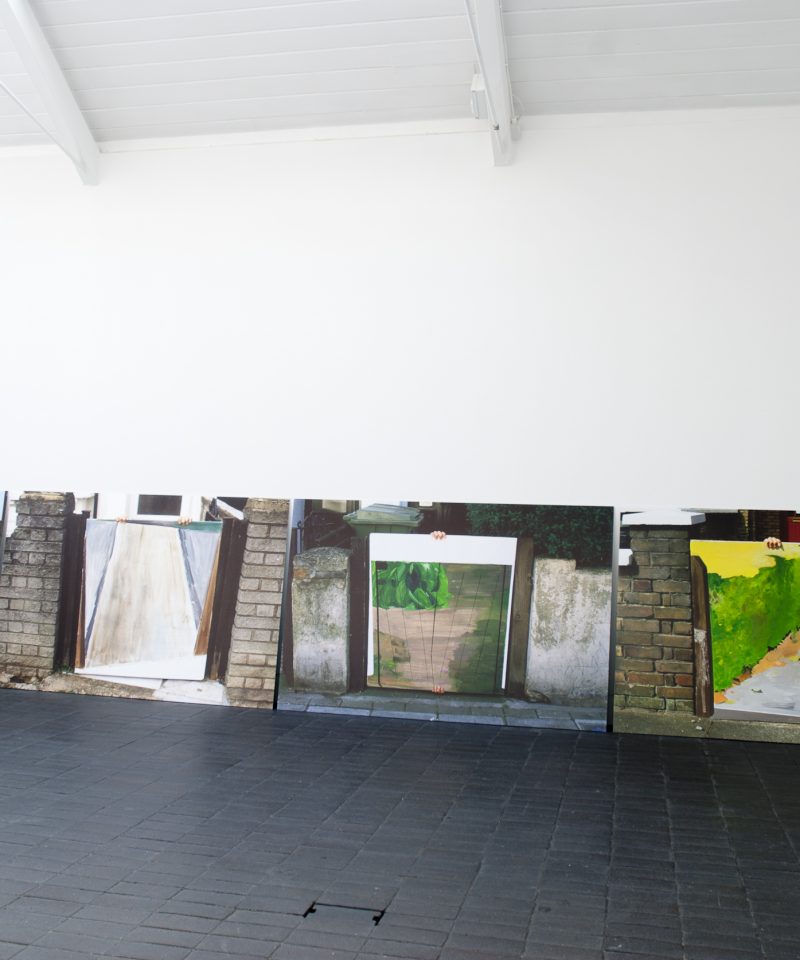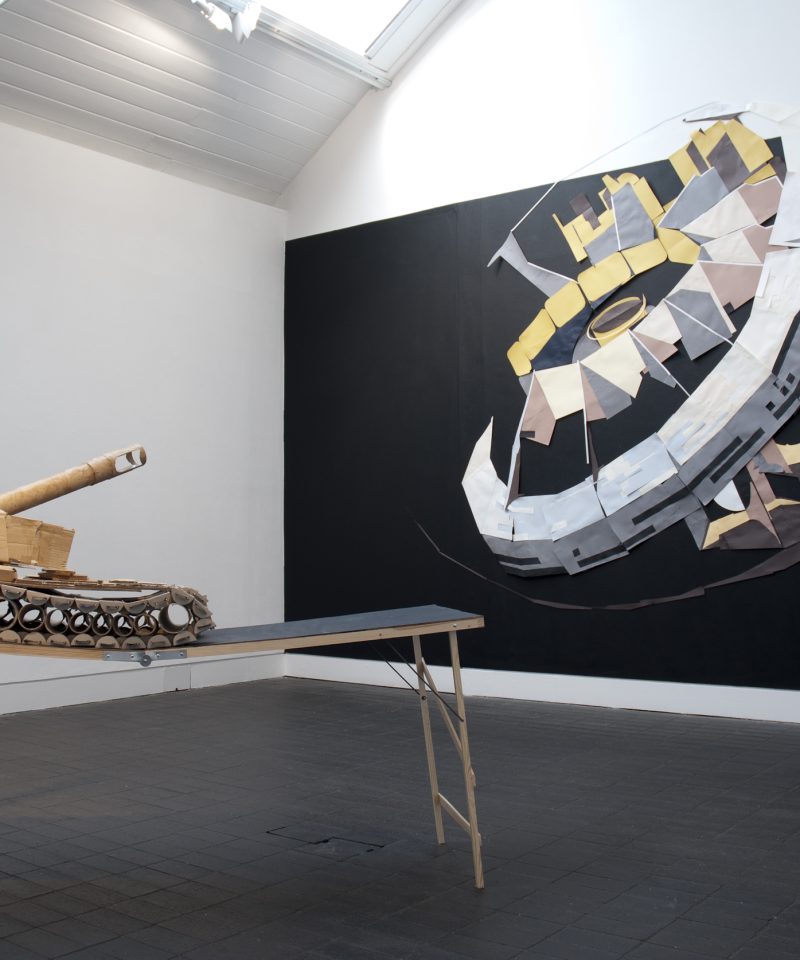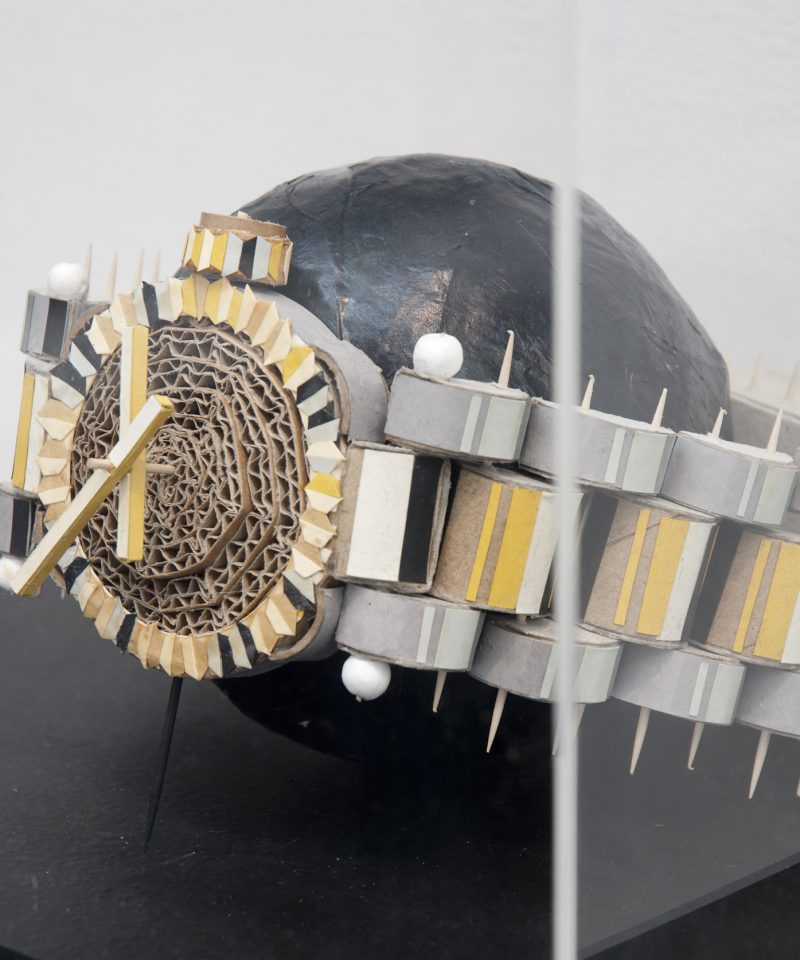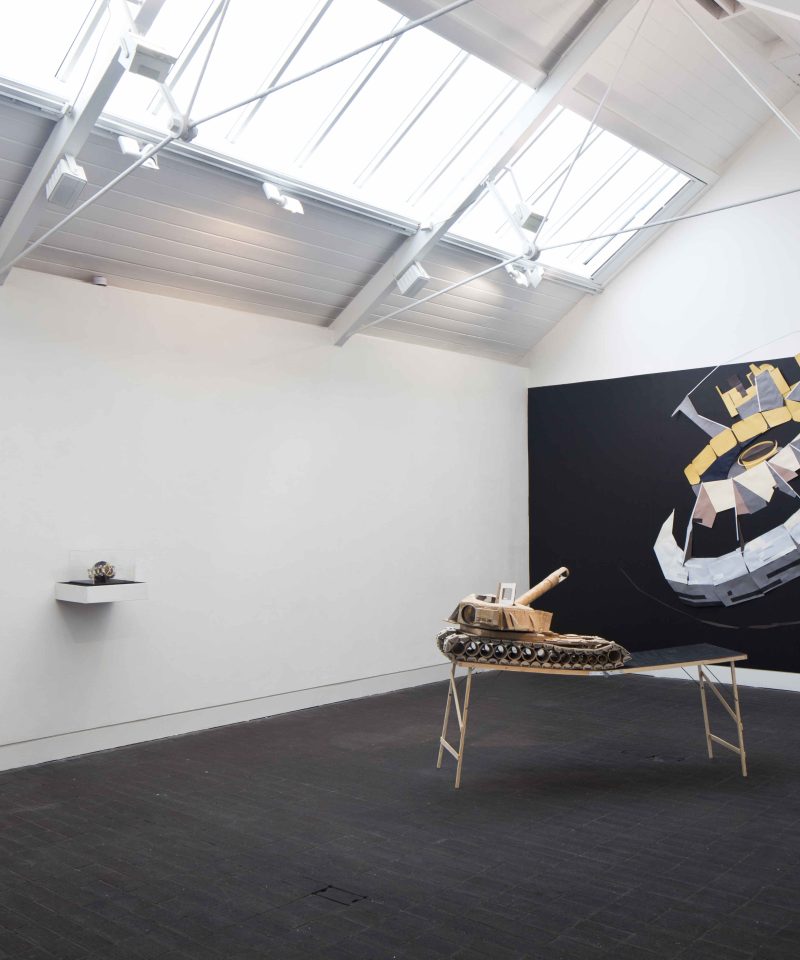In my first blog post I asked why painting continues to endure despite the proliferation of new media. Responding via Twitter, a staff member at the Herbert Read Gallery posted the following:
Despite sounding rather cynical, there is, I think, a fair bit of truth to this view. Yet, while market forces may provide a reason for why (some) artists continue to paint, it doesn’t really answer the question as to why they choose painting in the first place (or maybe @UCAHRG was being really cynical?!). More interesting though is the assumption being made here that painting is defined primarily as something that’s easy to keep and store (i.e. that it’s most likely flat and probably consists of pigment on canvas).
Looking at some of the work on display in the Jerwood Painting Fellowships exhibition, this understanding of painting soon becomes redundant. Take for example Clare Mitten’s collages and sculptural pieces, such as her wonderful cardboard tank or makeshift camera sitting atop its rickety tripod. In fact there isn’t a single piece in Mitten’s exhibition that could be described as painting in any traditional sense of the word, which begs the question: what exactly is painting anyway?
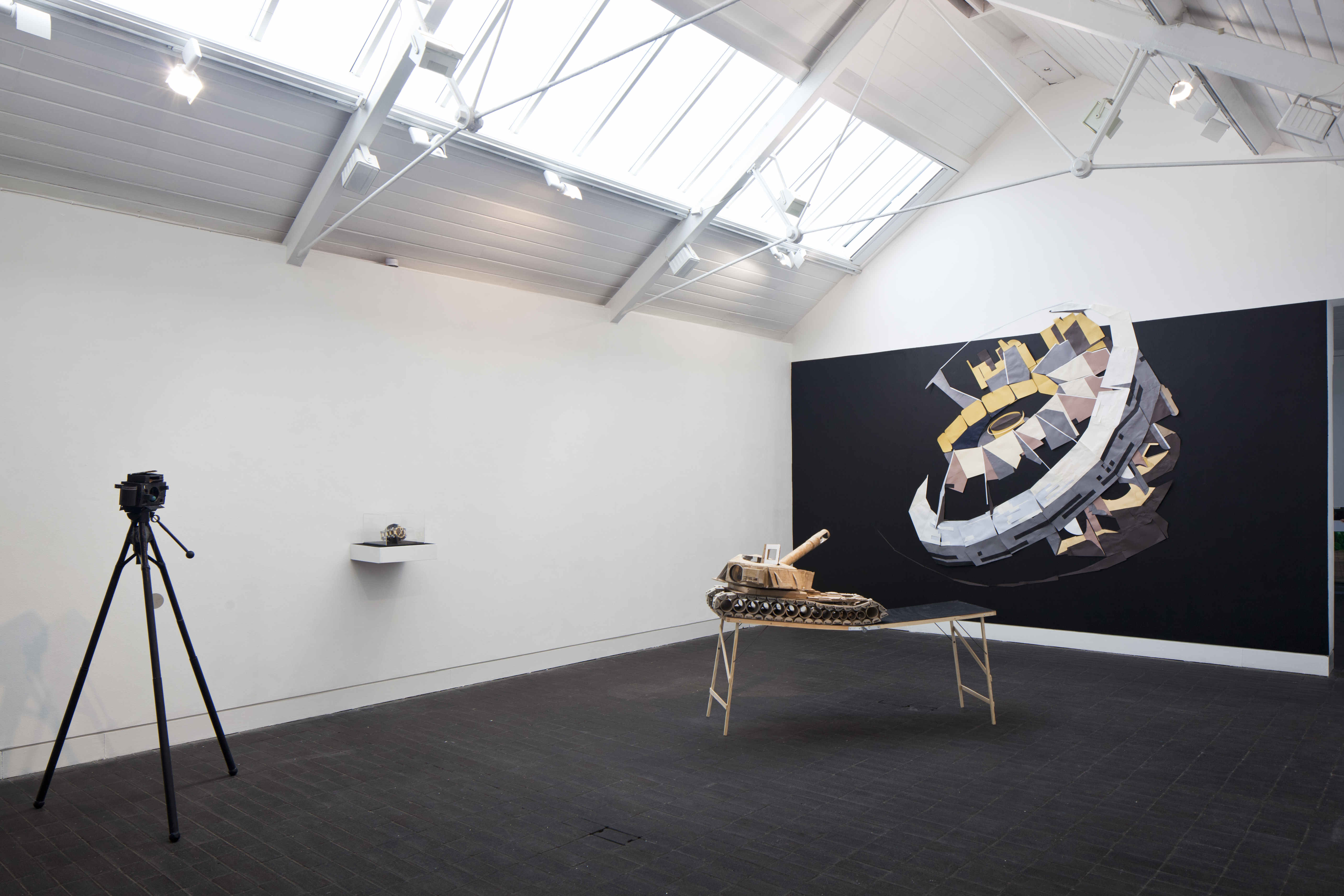
Commenting on the show at a-n’s Artists Talking blog, Annabel Tilley writes:
“…the artists – three women – seem to be reinventing painting. Painting as painting by Cara Nahaul, painting as collage by Clare Mitten and painting as photography by Corinna Till. An imaginative show – that stretches the idea of what painting is, and can be, and not with a loud, yah, boo, sucks attitude or in a macho let’s counter ‘painting is dead’ fashion but in a quiet, thoughtful, sincere way…” .In fact, the recent history of painting is littered with examples of artists who are stretching our understanding of painting, transcending the art form’s traditional boundaries and operating in what can be described as an ‘expanded field’ (see Rosalind Krauss’ Sculpture in the Expanded Field and Gustavo Fares’ Painting in the Expanded Field). Artists such as Jim Lambie, Katharina Grosse, Alex Hubbard, Fabian Marcaccio, Angela De La Cruz and many others have all played a part in radically redefining our understanding of contemporary painting. But, if sculptural objects, collages, installations and even films can now be considered as ‘painting’, just how useful is that term and, for that matter, the rest of art’s traditional categories?
In his introduction to Vitamin P, Barry Schwabsky writes: ‘the implicit distinction between painting as art and painting as an art refers to a possible distinction between “art” in general on the one hand and the various fine arts, of which painting would be one, on the other’. He then goes on to cite French philosopher Jean-Luc Nancy, who, writing in his 1996 book The Muses asks: ‘why are there several arts and not just one?’. ‘Why’, asks Schwabsky, ‘do we need a book about painting and not simply a book about art?’.
Indeed, why do we need a Jerwood Painting Fellowship at all when perhaps a plain old ‘Jerwood Artist Fellowship’ would suffice?
